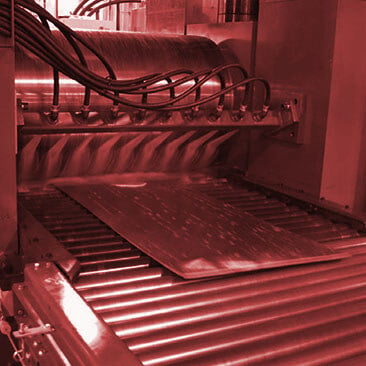Choosing the Right Cold Rolling Mill for Your Manufacturing Needs
Choosing the right cold rolling mill significantly impacts the quality of your product, how fast you can produce it, and how much it will cost you to get there. In industries like aerospace, automotive, medical, and energy, where precision is everything, cold rolling is a key part of shaping metal to exact specs.
It helps tighten tolerances, improve the surface finish, and increase strength. If you're aiming for consistent performance and high standards, the equipment you select needs to match your production needs from the start.
Understanding Cold Rolling Mills
Cold rolling is a metalworking process where metal is passed through rollers at a temperature below its recrystallization point. Unlike hot rolling, cold rolling steel results in tighter tolerances, better surface finishes, and increased material strength through strain hardening.
This process is widely used in industries where precision and surface quality are non-negotiable. Cold rolling ensures reliable, consistent output from structural components in aircraft to precision tubes in medical devices.
Benefits of cold rolling:
- Enhanced dimensional accuracy
- Improved surface finish
- Increased tensile strength and hardness
Types of Cold Rolling Mills
Choosing the correct cold rolling mill design is based on application type, production volume, and precision needs. Here's a breakdown of the most commonly used cold rolling machines:
-
Two-High Rolling Mills
- Two opposing rolls
- Simple, economical design
- Best for smaller-scale applications and initial thickness reduction
- Two opposing rolls
-
Three-High Rolling Mills
-
- Features three rolls in a vertical setup
- Allows rolling in both directions without stopping
- Increases throughput and minimizes downtime
- Features three rolls in a vertical setup
-
Four-High Rolling Mills
-
- Two small working rolls supported by two larger backup rolls
- Greater control over gauge and shape
- Ideal for thin materials with a large width
- Two small working rolls supported by two larger backup rolls
For high-precision requirements, FENN’s four-high mills are engineered to provide better control over shape and gauge, reducing deflection and improving overall surface quality.
-
Combination Rolling Mills
- Adaptable for both Two-High and Four-High
- Useful in multi-process facilities
- Supports various material types and thicknesses
- Adaptable for both Two-High and Four-High
-
Tandem Rolling Mills
- Multiple rolling stands in sequence
- Built for high-volume, continuous production
- Reduces thickness progressively at each stage
- Multiple rolling stands in sequence
-
Horizontal Rolling Mills
- Rollers aligned horizontally
- Tailored for specific production setups
- Used in niche industry applications such as compacting powder intro strip
- Rollers aligned horizontally
-
Laboratory Rolling Mills
- Compact design for R&D and small-batch work
- Offers precision control for experimentation
- Popular in the aerospace and medical sectors
- Compact design for R&D and small-batch work
-
Mills with Winders
- Integrates coiling mechanisms
- Ideal for continuous rolling
- Reduces material handling time and boosts efficiency
- Integrates coiling mechanisms
FENN’s rolling mills with integrated winding systems streamline continuous production and improve material handling for coiled products.
Key Factors to Consider When Choosing a Cold Rolling Mill
Selecting a cold rolling mill isn’t just about size or speed—it requires matching the equipment to your exact production needs. Here are the most important considerations:
Material Type and Thickness
Each material has its own rolling characteristics. Ensure your chosen cold rolling mill can handle your desired metal type and thickness without compromising tolerances.
Production Volume and Speed
A tandem mill setup benefits high-output facilities, while smaller operations can opt for a two-high or three-high mill. Matching your mill to your production scale helps optimize efficiency.
Precision and Tolerance Requirements
When working with critical components—like medical implants or aerospace parts—precision matters. Mills like the four-high design provide superior control over thickness and flatness.
Automation and Technological Features
Modern cold rolling machines now come equipped with digital controls, inline monitoring, and predictive maintenance systems. These advancements reduce error rates and support consistent production output.
Energy Efficiency and Cost Considerations
Different mills consume energy at varying levels. Equipment that minimizes waste and maximizes throughput will deliver better cost efficiency over time.
Space and Infrastructure
Always consider your facility’s layout. Larger mills, like tandem units, require more space and support infrastructure, while compact models, such as lab mills, are more adaptable.
Ready to Find the Right Cold Rolling Mill? Contact FENN for Proven Solutions
Choosing the right cold rolling steel equipment involves looking closely at what your operation really needs—everything from material type and thickness to output goals and floor space. With so many configurations available, from straightforward two-high mills to more advanced setups with integrated winders, there’s a cold rolling machine suited for virtually every metal forming need. The key is finding the setup that fits your workflow and delivers consistent, high-quality results.
With more than 100 years of experience in precision metal forming, FENN understands the challenges manufacturers face and builds cold rolling machines that meet real-world production demands.
Learn more about our cold rolling mill options here, or contact us today for a custom recommendation!


